Author: Marshall Schott
While nowhere near as globally popular as its paler cousin, Munich Dunkel is similar to German Pils in its delicious drinkability, and it has an interestingly rich history. At the time the German Purity Law, aka Reinheitsgebot, was introduced in 1516, Munich Dunkel was noted as being the most commonly brewed style, which like many other German beers, is fermented with lager yeast and typically cold conditioned for a period of time.
Good examples of Dunkel generally have a toasty malt character due to the relatively heavy use of darker kilned Munich malts, though the most traditional examples often employ a decoction mash, which purportedly enhances the malt richness. German noble hops contribute spicy, floral, and earthy characteristics, while the lagering step ensures a clean fermentation profile. The BJCP provides the following description:
Characterized by depth, richness and complexity typical of darker Munich malts with the accompanying Maillard products. Deeply bready-toasty, often with chocolate-like flavors in the freshest examples, but never harsh, roasty, or astringent; a decidedly malt-balanced beer, yet still easily drinkable.
I had my first commercial Munich Dunkel nearly a decade ago and immediately fell in love with the style, which I view as being sort of in between German Pils and Schwarzbier. Given the steps often employed to brew this style including decoction and lagering, some are understandably hesitant to brew one up themselves. Curious to see how one would turn out when certain corners were cut, I recently made a Munich Dunkel using my Short & Shoddy approach.
| BREWING THE BEER |
Over the years, I’ve brewed a handful of Munich Dunkel batches and looked to those recipes for inspiration, swapping out the typical German noble hops with a domestic substitute and using the only roasted grain I had on hand.
Short & Shoddy Munich Dunkel
Recipe Details
| Batch Size | Boil Time | IBU | SRM | Est. OG | Est. FG | ABV |
|---|---|---|---|---|---|---|
| 5.5 gal | 25 min | 22.2 IBUs | 20.0 SRM | 1.055 | 1.011 | 5.8 % |
| Actuals | 1.055 | 1.011 | 5.8 % | |||
Fermentables
| Name | Amount | % |
|---|---|---|
| Metolius Munich-style Malt (Mecca Grade) | 8.5 lbs | 62.96 |
| Pelton Pilsner-style Malt (Mecca Grade) | 4.75 lbs | 35.19 |
| Roasted Barley (Bairds) | 4 oz | 1.85 |
Hops
| Name | Amount | Time | Use | Form | Alpha % |
|---|---|---|---|---|---|
| Mt. Hood | 30 g | 25 min | First Wort | Pellet | 5 |
| Mt. Hood | 30 g | 15 min | Boil | Pellet | 5 |
Yeast
| Name | Lab | Attenuation | Temperature |
|---|---|---|---|
| Global (L13) | Imperial Yeast | 75% | 46°F - 56°F |
Notes
| Water Profile: filtered Fresno water with some gypsum |
Download
| Download this recipe's BeerXML file |
I started this brew day at 10:39 AM by collecting the full volume of water.
After turning on the element to get the water heating up, I added an unmeasured dose of gypsum in hopes of increasing the impression of crispness in the finished beer.
I then weighed out and milled the grains directly into a BIAB fabric filter.
When the water was adequately heated, I stirred the grains in then checked the mash temperature.
The mash was left alone for a brief 30 minutes.
During the mash rest, I prepared the kettle hop additions.
Once the short mash rest was complete, I removed the grains and brought the wort to a boil, adding hops at the times stated in the recipe.
When the abbreviated 25 minute boil was complete, I quickly chilled the wort with my IC.
A refractometer reading showed the wort hit my target 1.055 OG for a brewhouse efficiency of 63%.
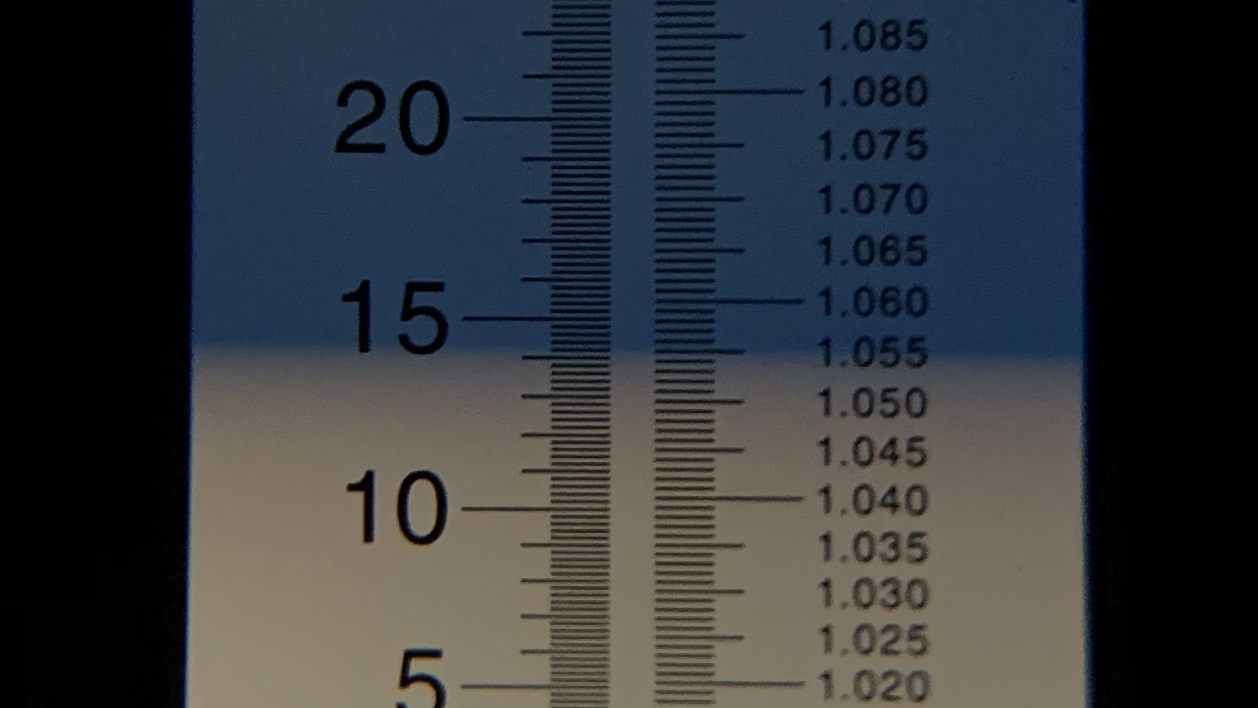
I then transferred the wort to a sanitized fermentation vessel.
Next, I pitched a single pouch of Imperial Yeast L13 Global into the 70°F/21°C wort.
The fermentation vessel was placed in my chamber controlled to 66°F/19°C and hooked up my CO2 capture device. The time was 12:41 PM for a total brew day time of 2 hours 2 minutes.
With observable activity all but absent after 9 days, I took a hydrometer measurement confirming FG had been reached.
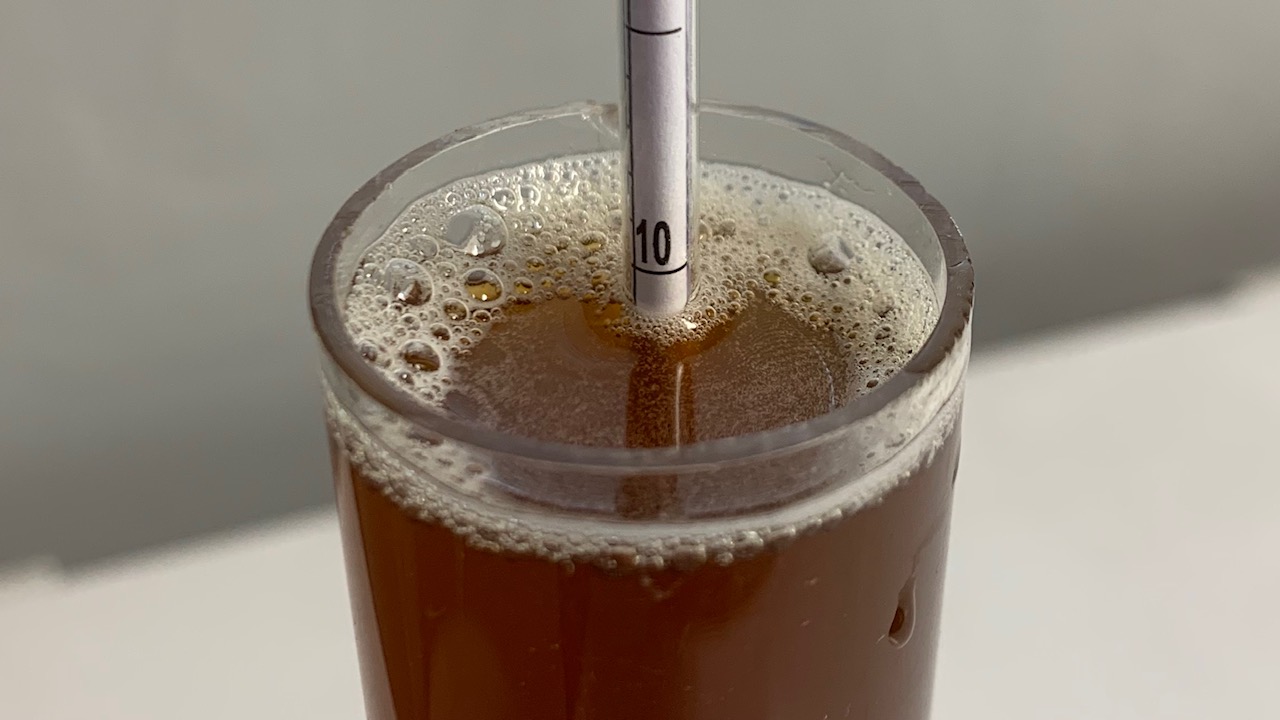
At this point, I hit the fermenter with 2 psi of CO2 and reduced the temperature of the chamber to 33°F/1°C for cold crashing. I added gelatin fining the following morning then waited 3 more days before racking the beer to a naturally purged keg. The filled keg was placed in my keezer and burst carbonated overnight before I reduced the gas to serving pressure. I let the beer condition for just a week before serving it to tasters for evaluation.
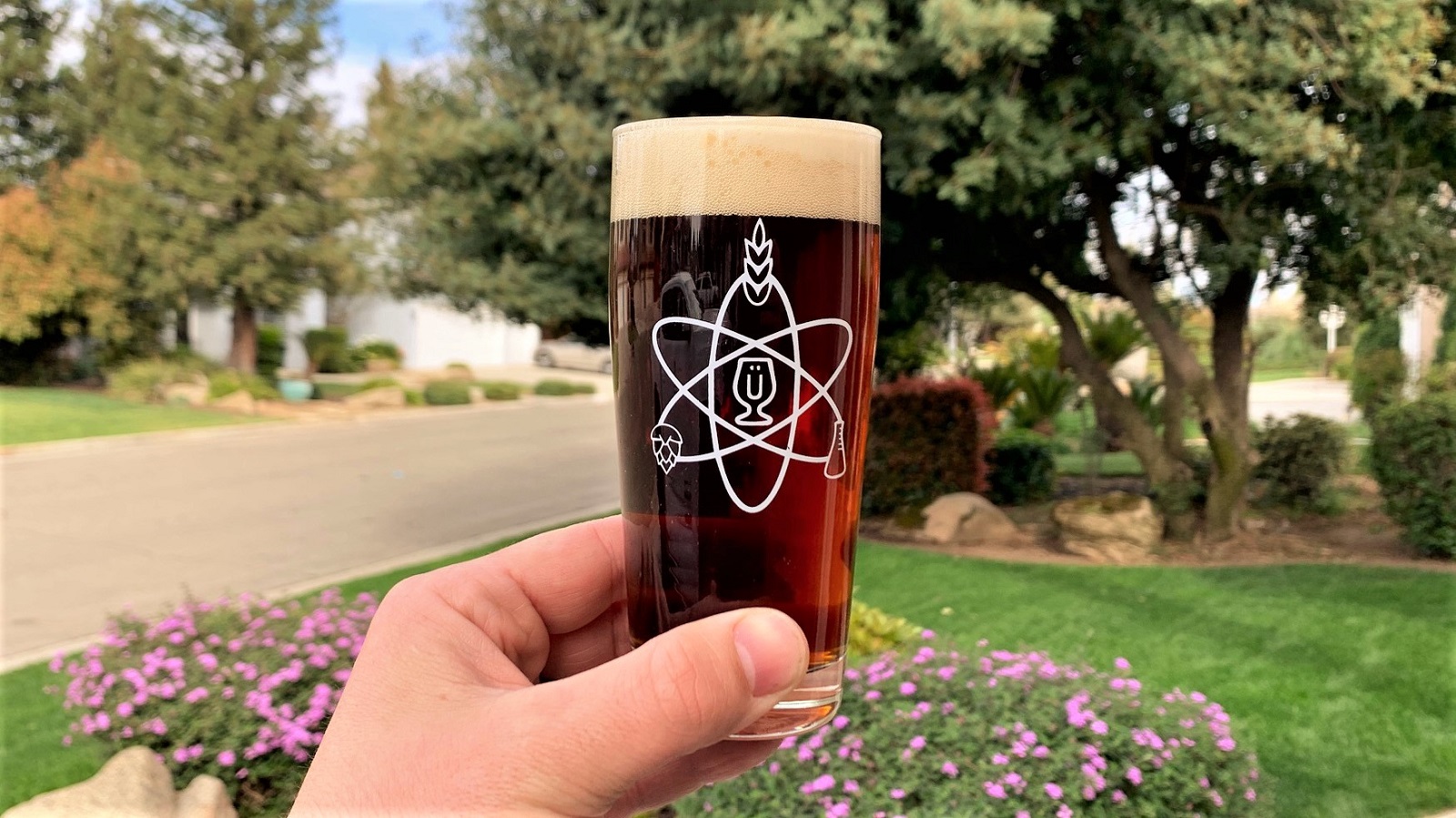
| RESULTS |
Cheers to House Of Pendragon for allowing me to use their taproom to collect data on this beer.
A total of 11 people of various levels of experience participated in this Short & Shoddy evaluation. Participants were informed of the specific beer style and provided the BJCP description prior to completing the survey. Tasters were then instructed to rate how hoppy, malty, and dry they perceived the beer to be on a 0-5 scale where a rating of 0 indicated “not at all” and 5 indicated “extremely.”
Tasters were provided a list of common hop, malt, and yeast characteristics then instructed to select from each the one they perceived as being most prominent in the beer.
Hop Characteristics
Malt Characteristics
Yeast Characteristics
Next, participants were asked to indicate whether or not they detected any off-flavors in the beer; those who did were provided a list of common off-flavors and instructed to select the one they perceived as being strongest. Nobody identified an off-flavor in this beer.
Tasters were then asked to rate how well the beer represented the intended style, based on the provided BJCP description, on a 0-5 scale where 0 meant “not at all” and 5 meant “exactly.”
Finally, tasters were asked to rate how much they enjoyed the beer on a 0-5 scale where 0 indicated they hated it and 5 indicated they loved it.
My Impressions: I really enjoyed this beer and struggled to keep my hands off of it prior to serving it to tasters. The Mecca Grade Estate Metolious contributed what I perceived as a very pleasant toasted graham cracker malt flavor, which paired beautifully with the subtle spice and floral notes from the Mt. Hood hops. I was a bit concerned about the beer having too much roast, but that didn’t seem to be the case at all, rather I got a touch of dark chocolate in the finish that was quite pleasant.
| CONCLUSION |
The German word “dunkel” literally means “dark,” and when most people think of dark beer, it’s likely ale styles such as Stout and Porter come to mind. While roasted grains are often used when brewing Munich Dunkel, it’s done so judiciously, the goal being to emphasize the toasty characteristics contributed by Munich malt and a decoction mash. Moreover, as a lager style, cooler fermentation temperatures and extended cold storage are used to produce a beer that’s crisp, clean, and easy to drink.
Despite performing an abbreviated single infusion mash, a reduced boil length, and fermented with a traditional lager yeast at ale temperature, a majority of people who evaluated my Short & Shoddy Munich Dunkel not only felt it was fairly representative of the style, but seemed to enjoy it quite a bit as well. Additionally, not a single taster noted the beer as possessing any off-flavors and most felt the fermentation character was clean, exactly inline with expectations for the style.
I’ve had commercial and homebrewed versions of Munich Dunkel brewed with very traditional methods including decoction mashing and extended lagering periods, and while those are quite often very delicious, I can’t say I missed anything in my Short & Shoddy version. To my thinking, the biggest differences could more plausibly be chalked up to my use of Mecca Grade Estate Malt and a domestic substitute for noble hops than my actual brewing process. For the person who loves Munich Dunkel but doesn’t have the gear or time to brew lager “properly,” I’d definitely recommend this recipe!
If you have thoughts about this Short & Shoddy brew, please feel free to share it in the comments section below!
Support Brülosophy In Style!
All designs are available in various colors and sizes on Amazon!
Follow Brülosophy on:
FACEBOOK | TWITTER | INSTAGRAM
If you enjoy this stuff and feel compelled to support Brulosophy.com, please check out the Support page for details on how you can very easily do so. Thanks!


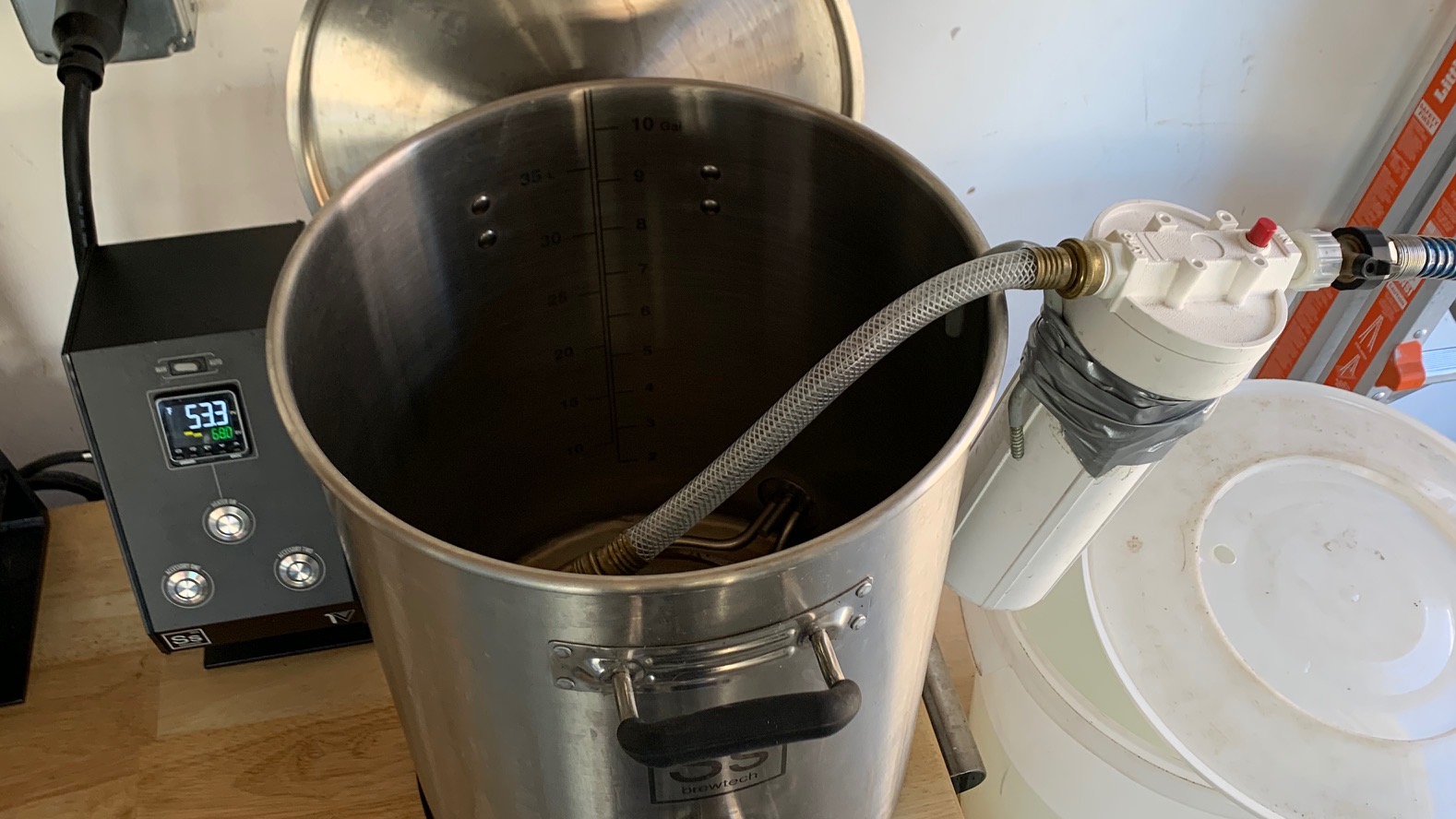
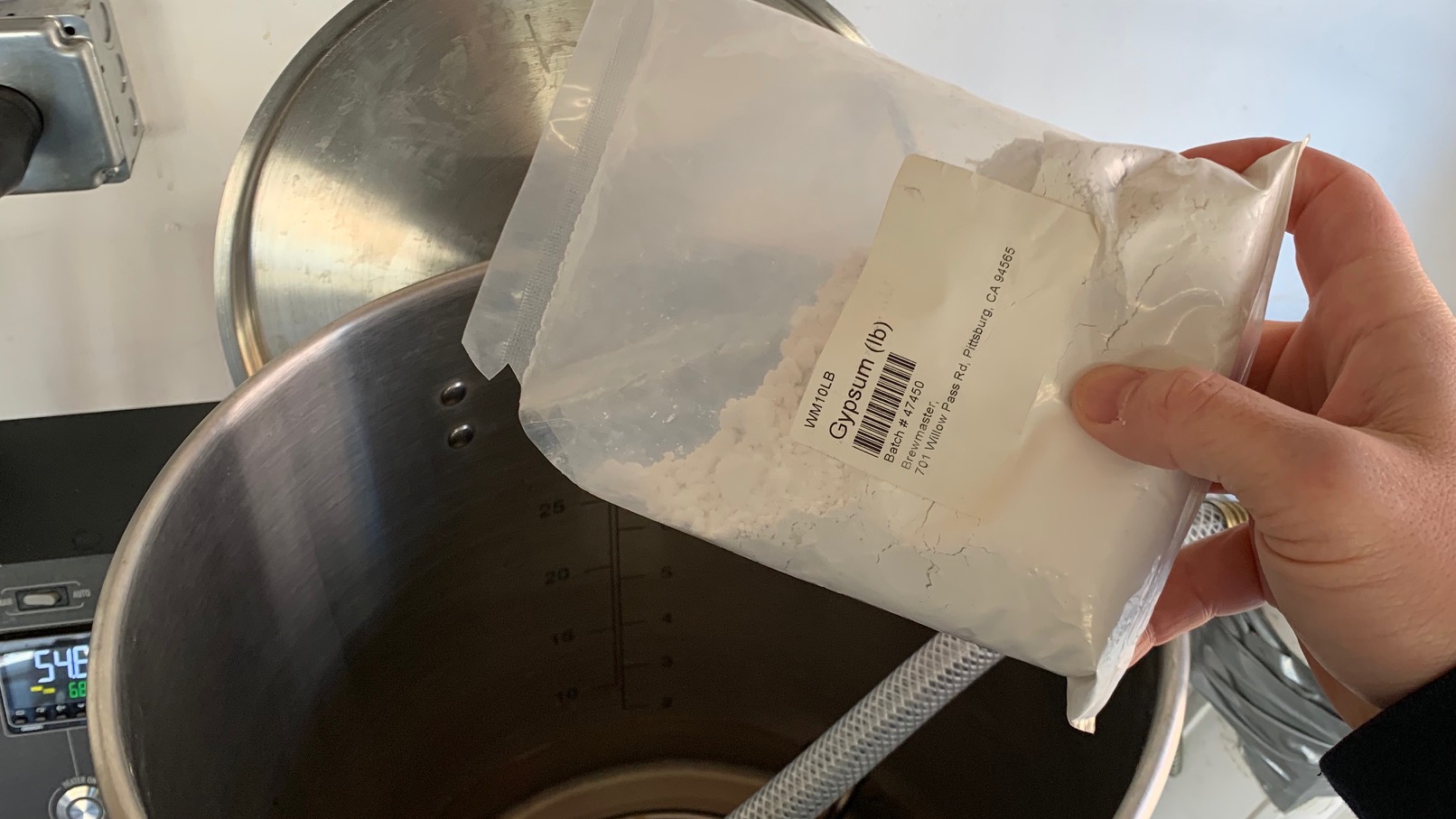
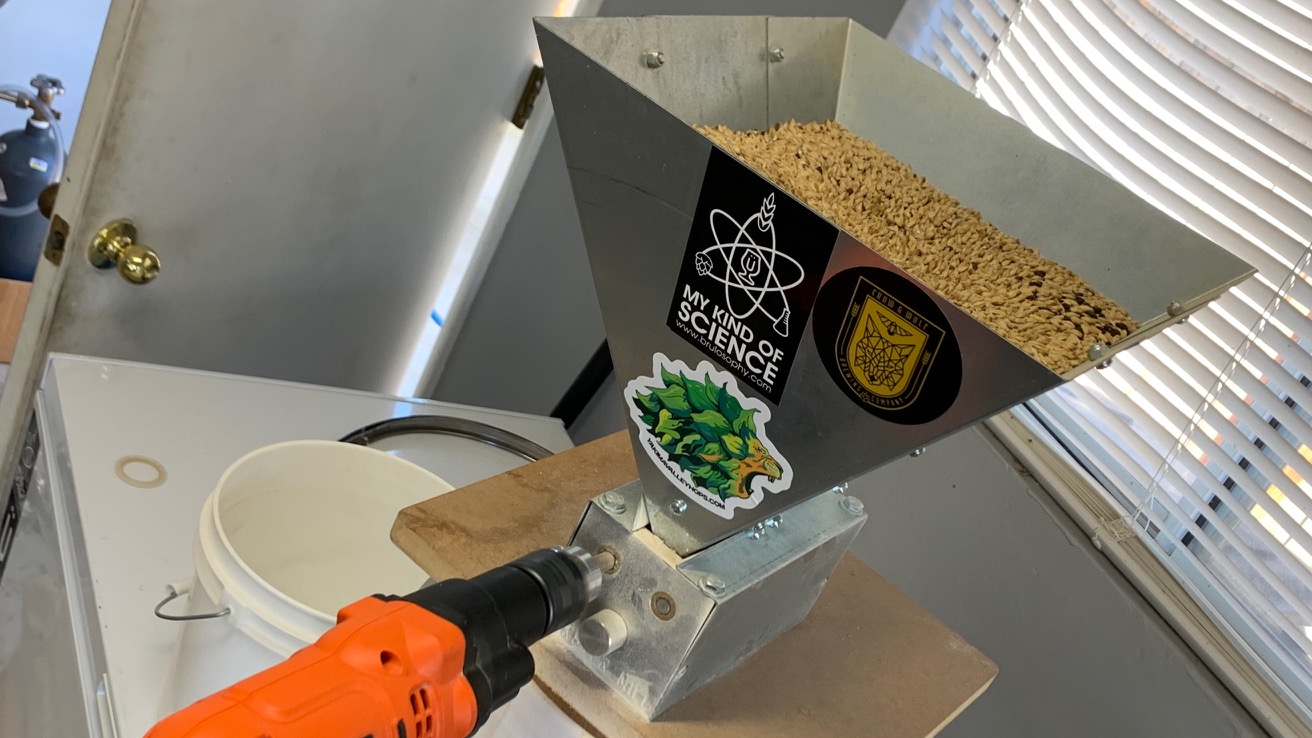
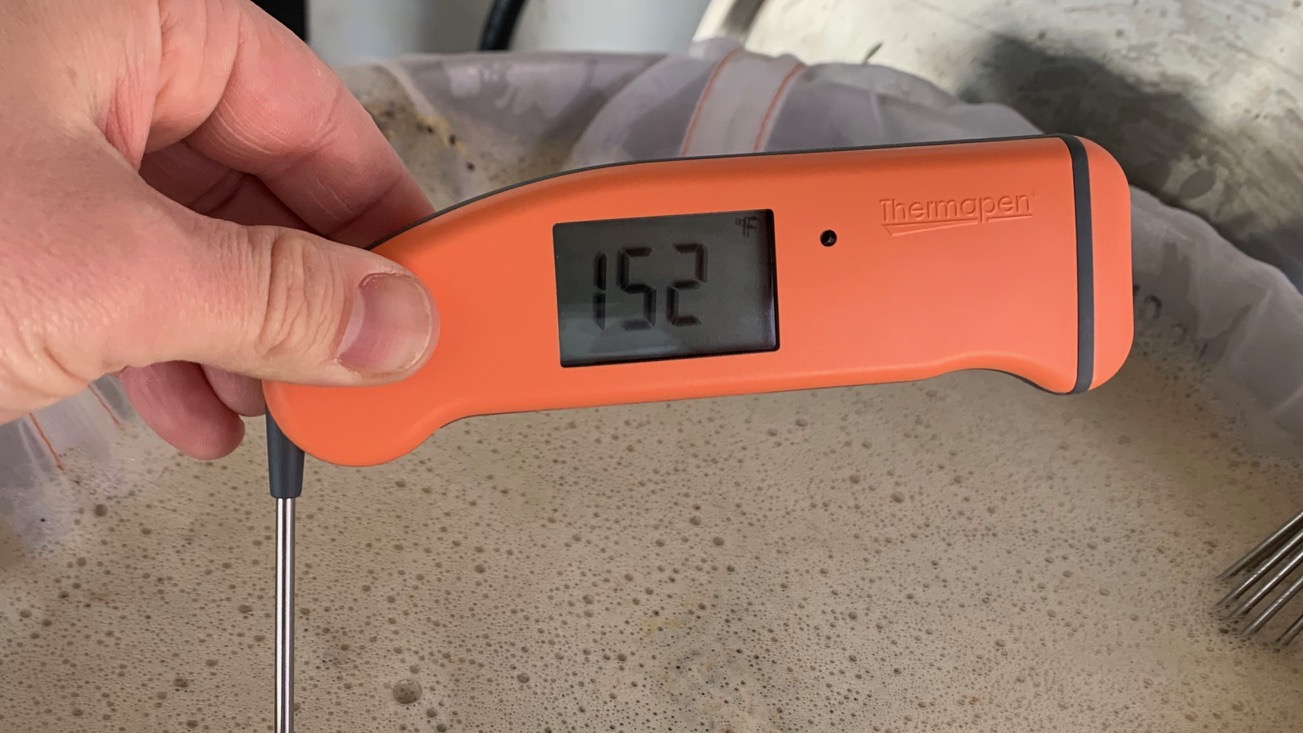
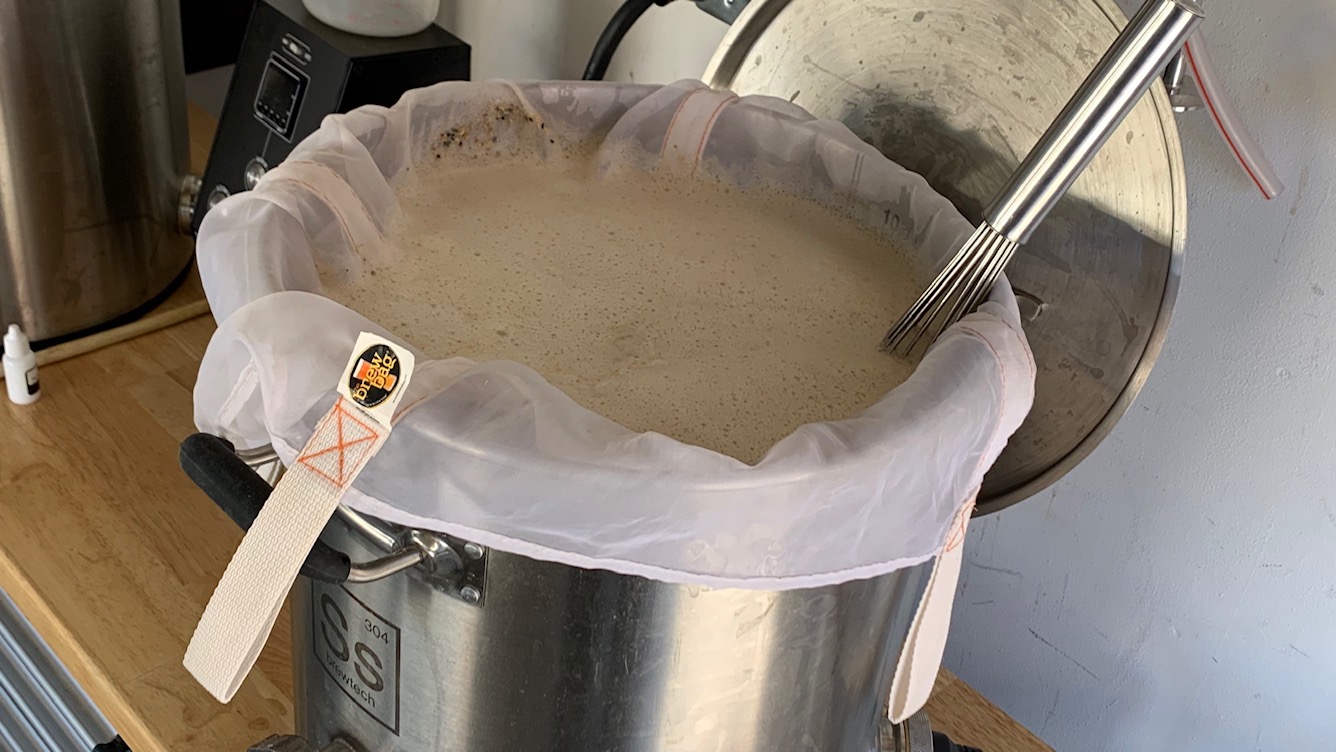
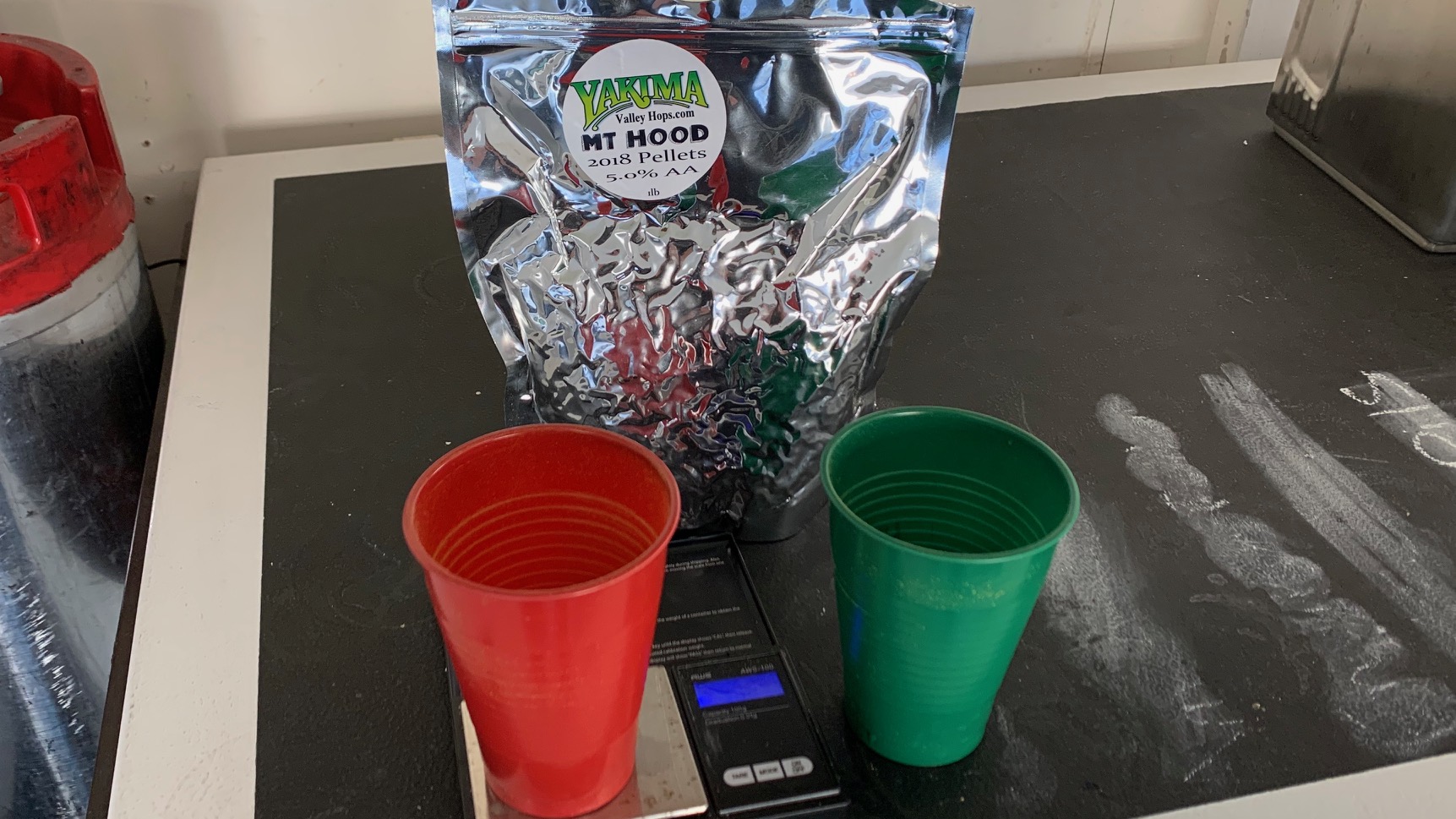
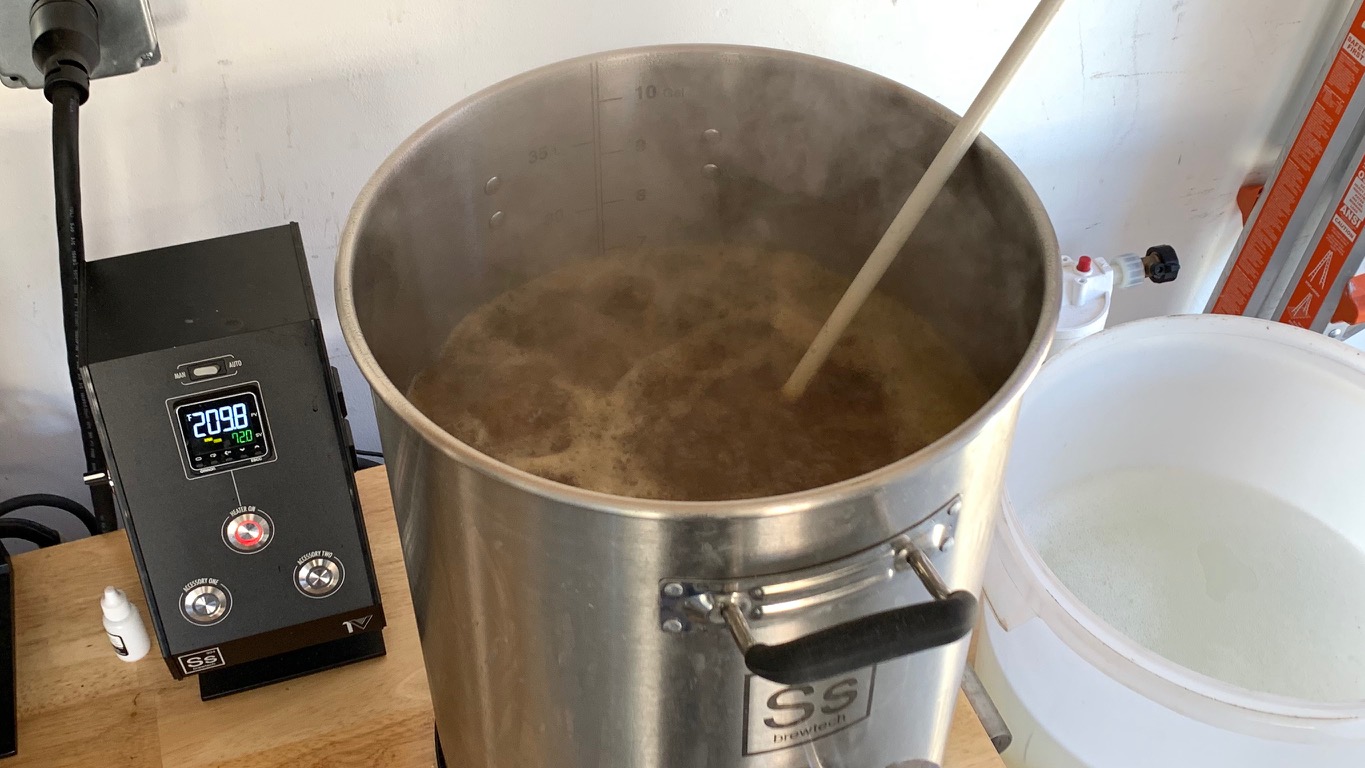
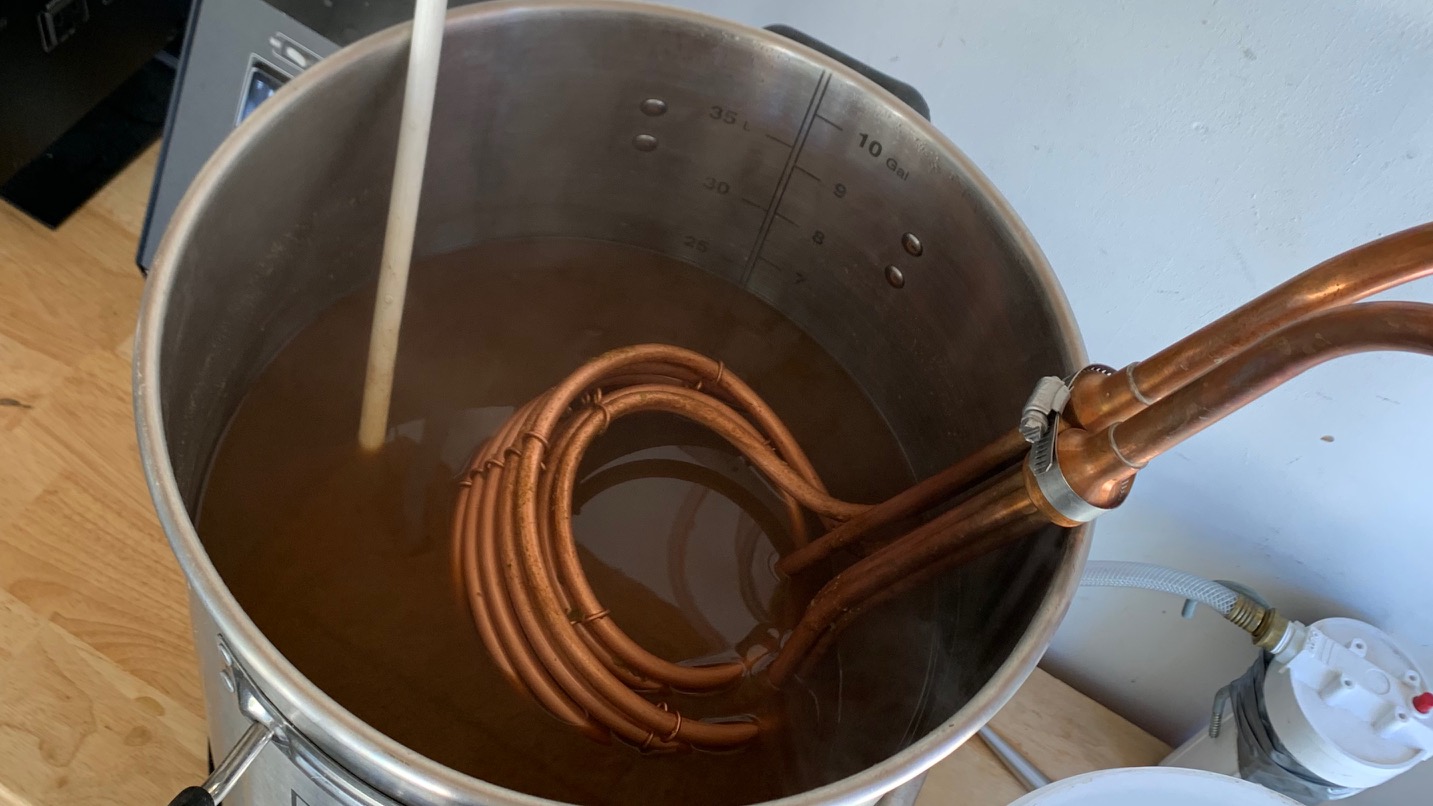
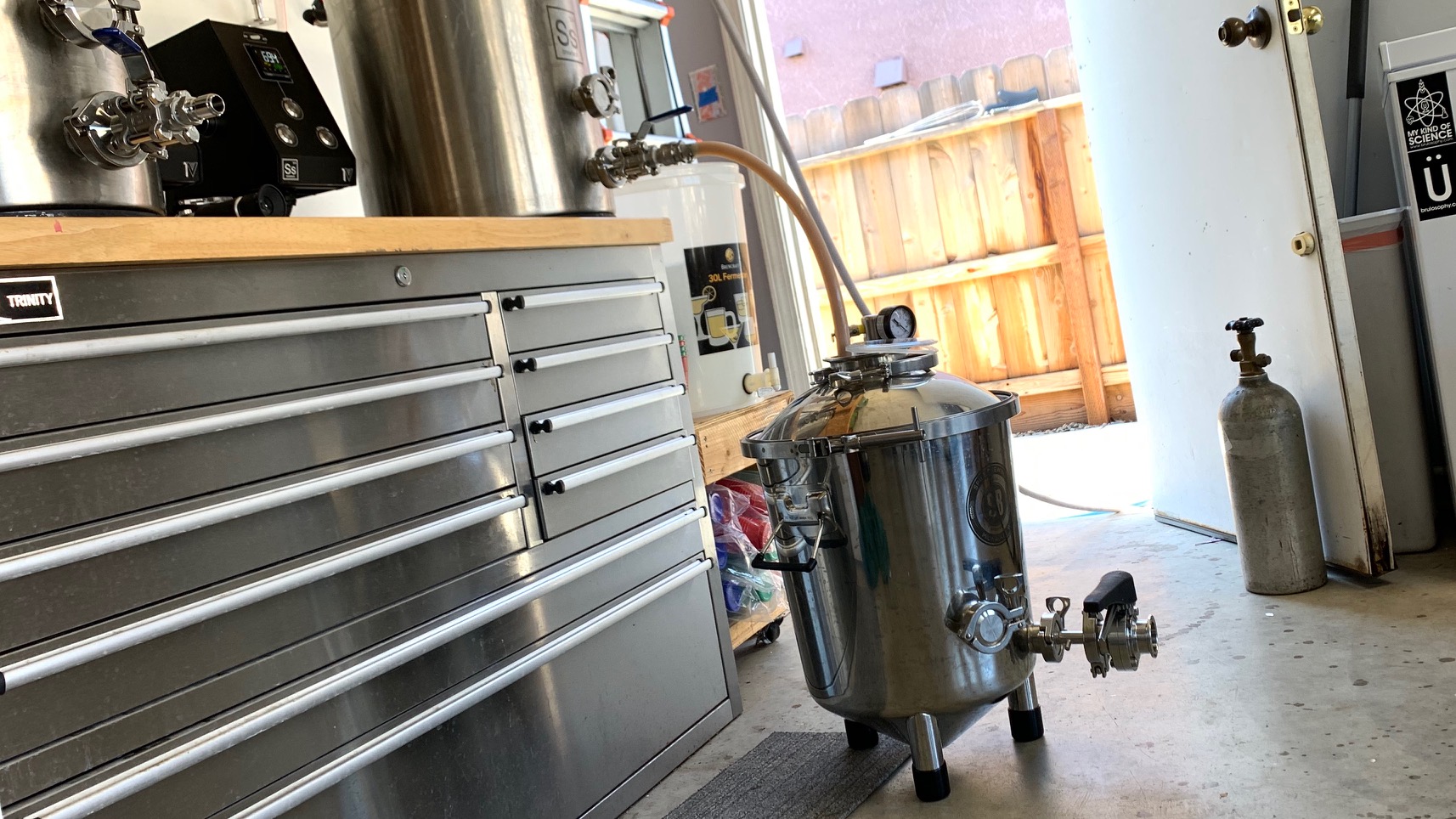
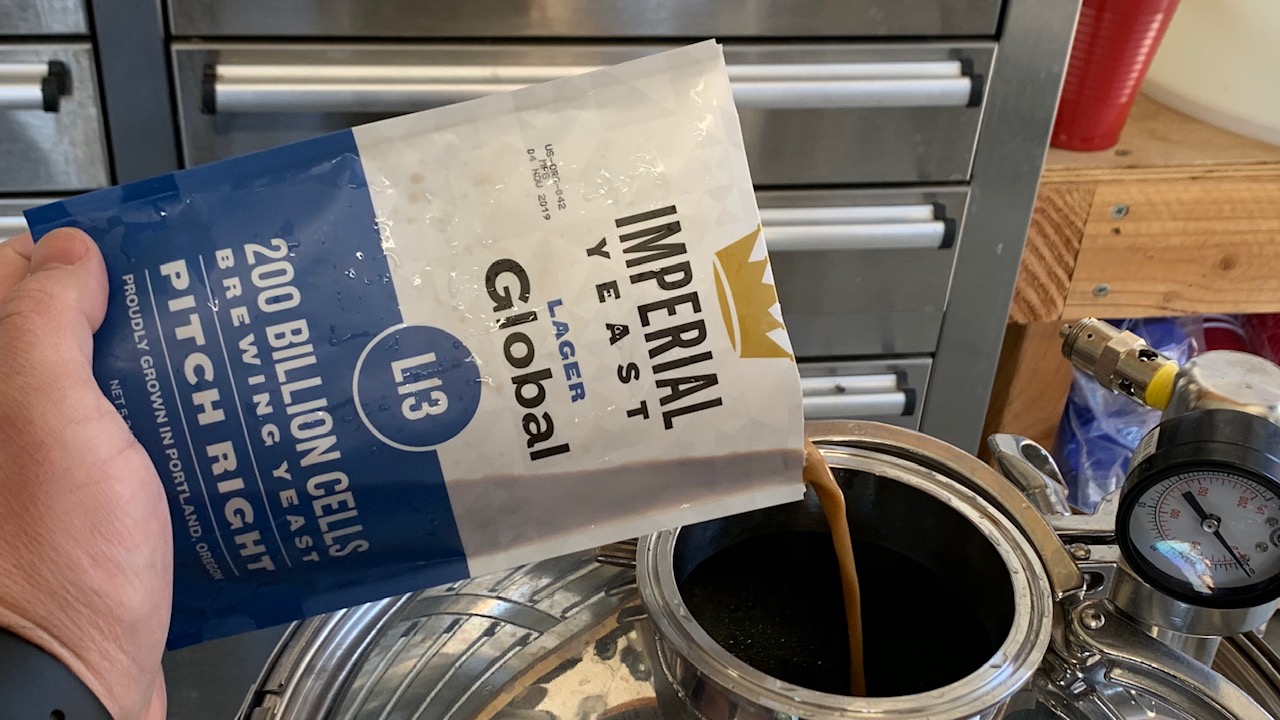
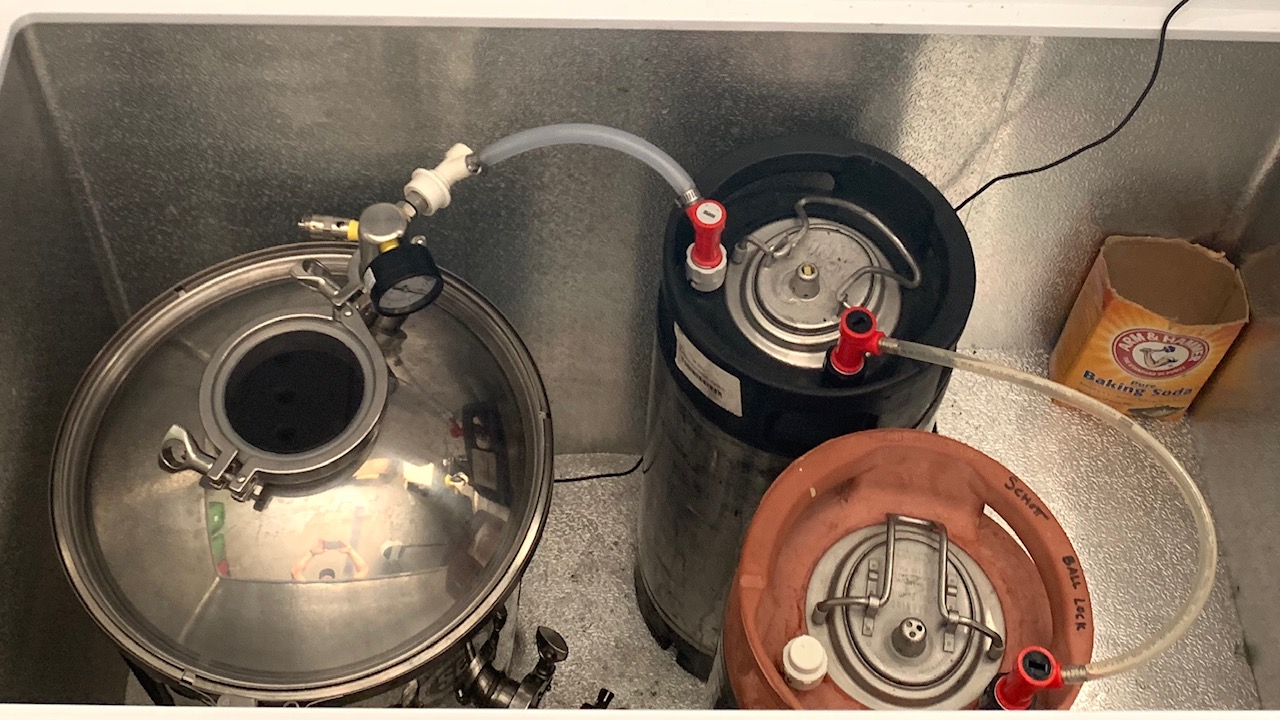
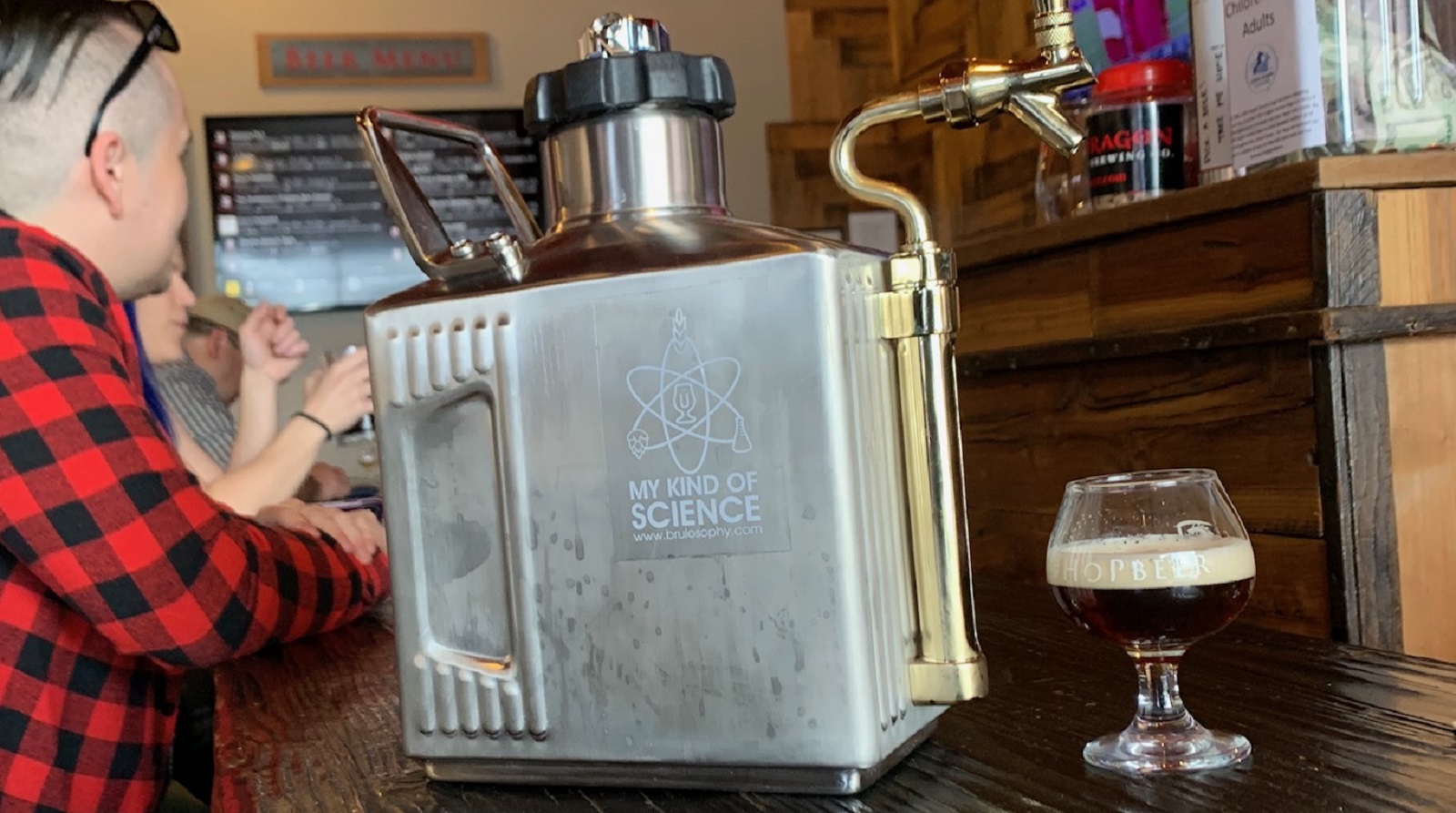
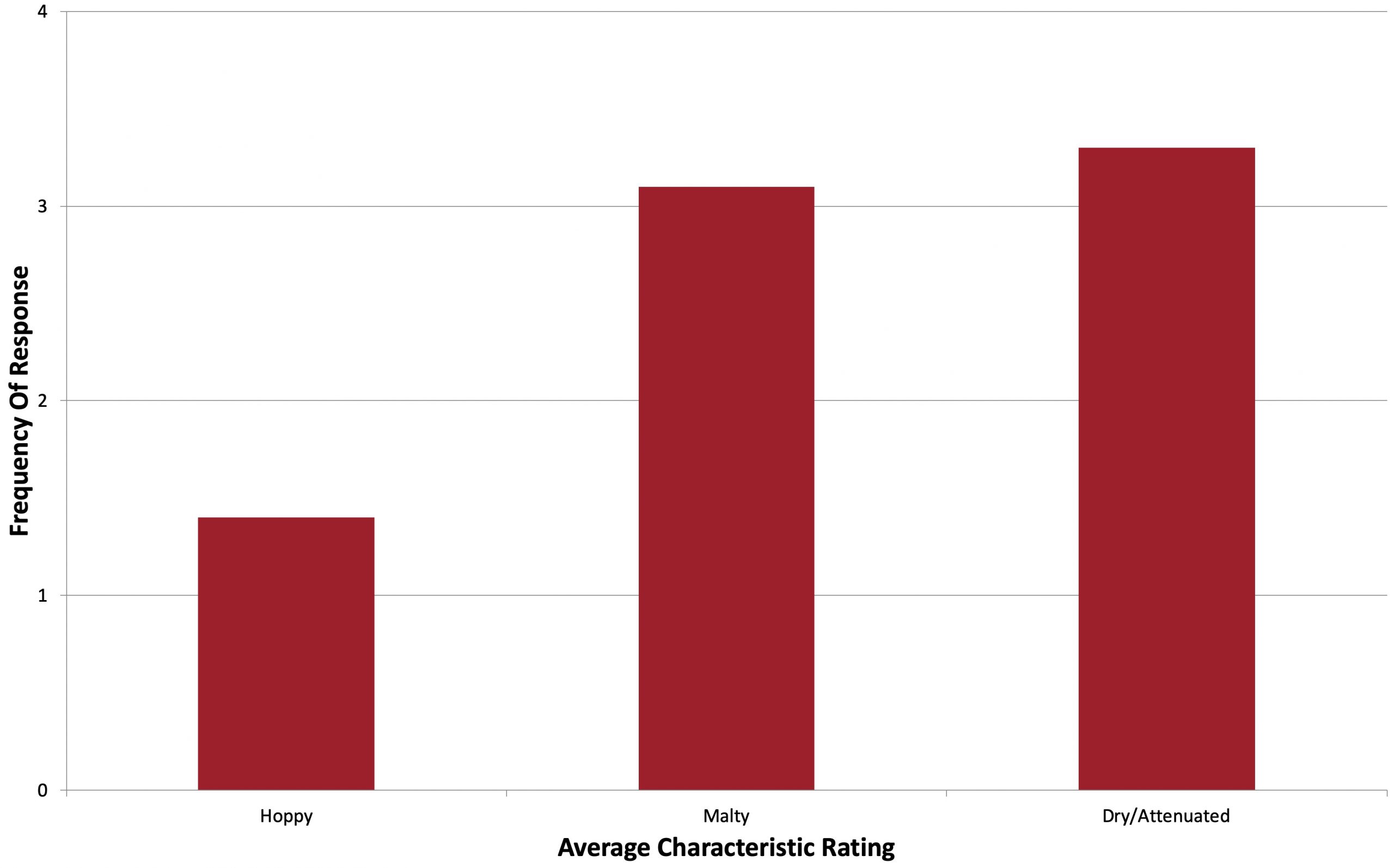
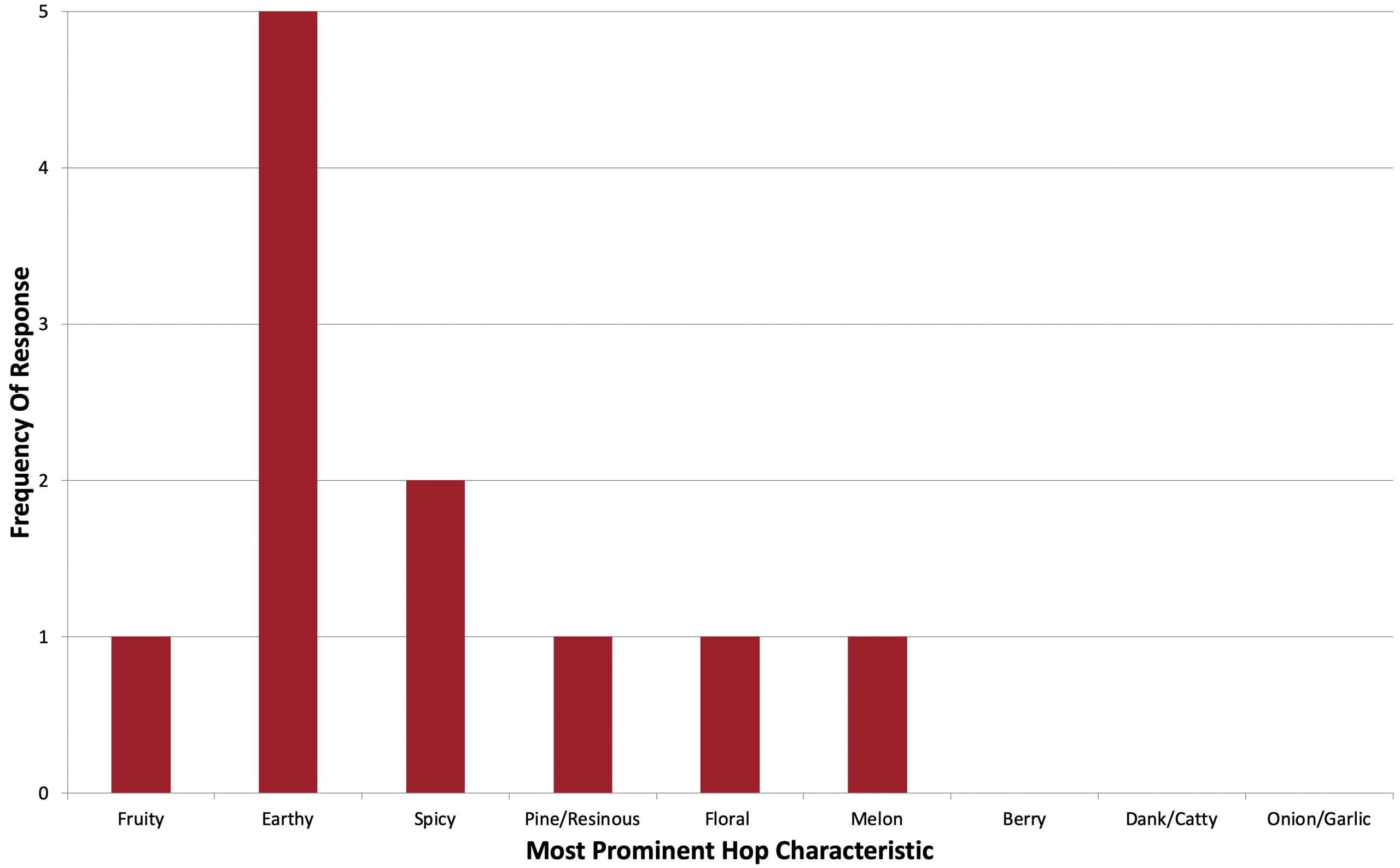
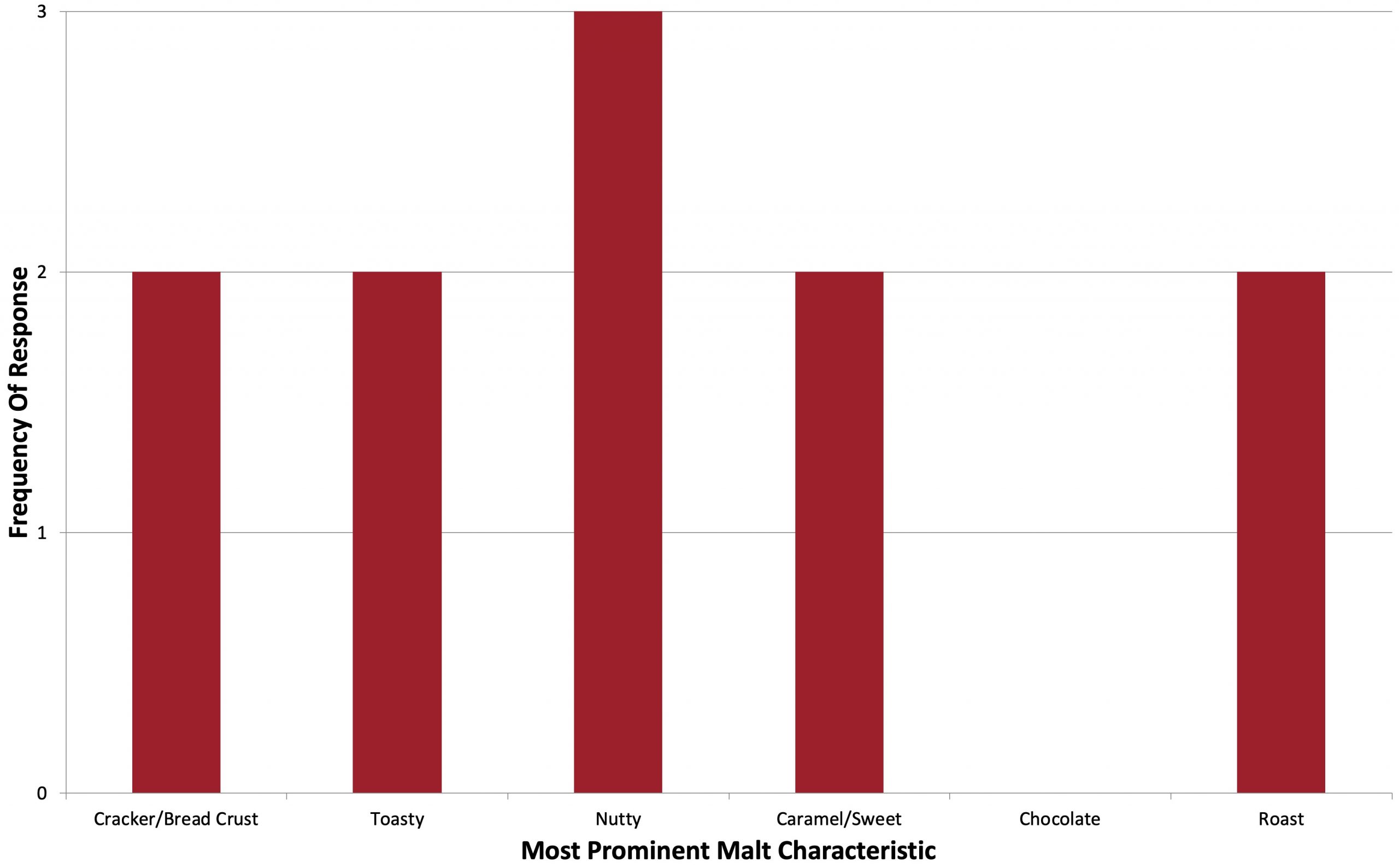
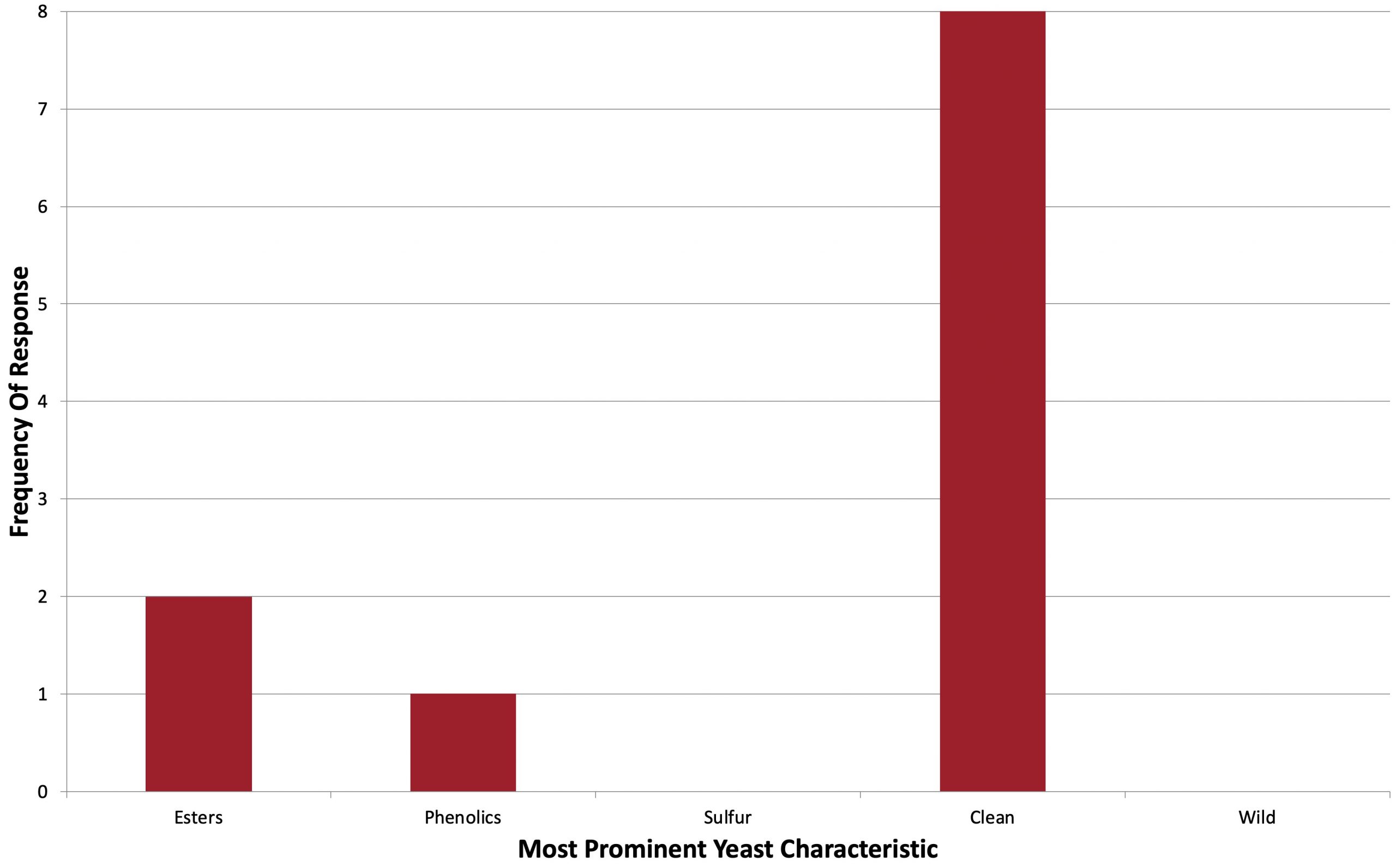
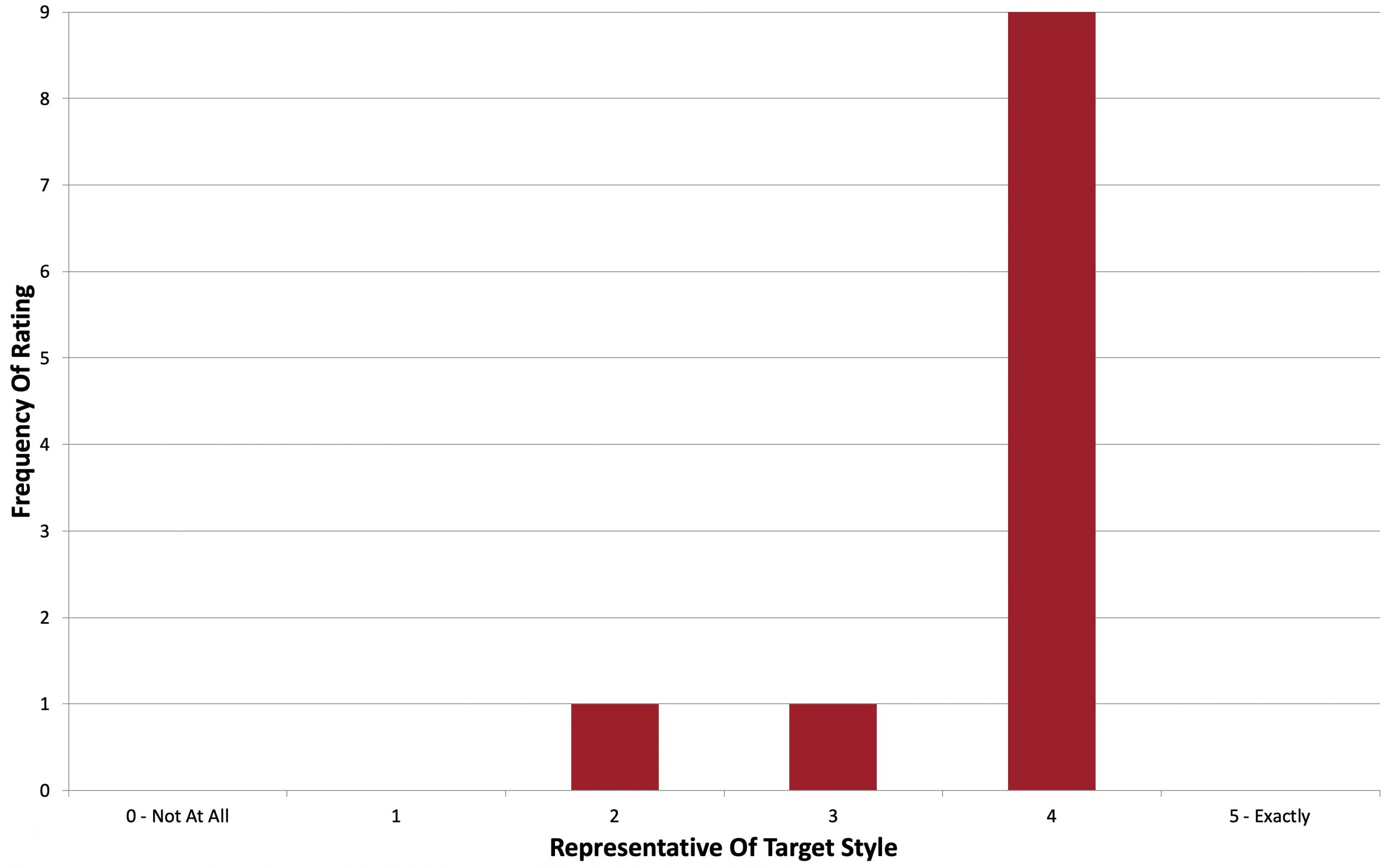
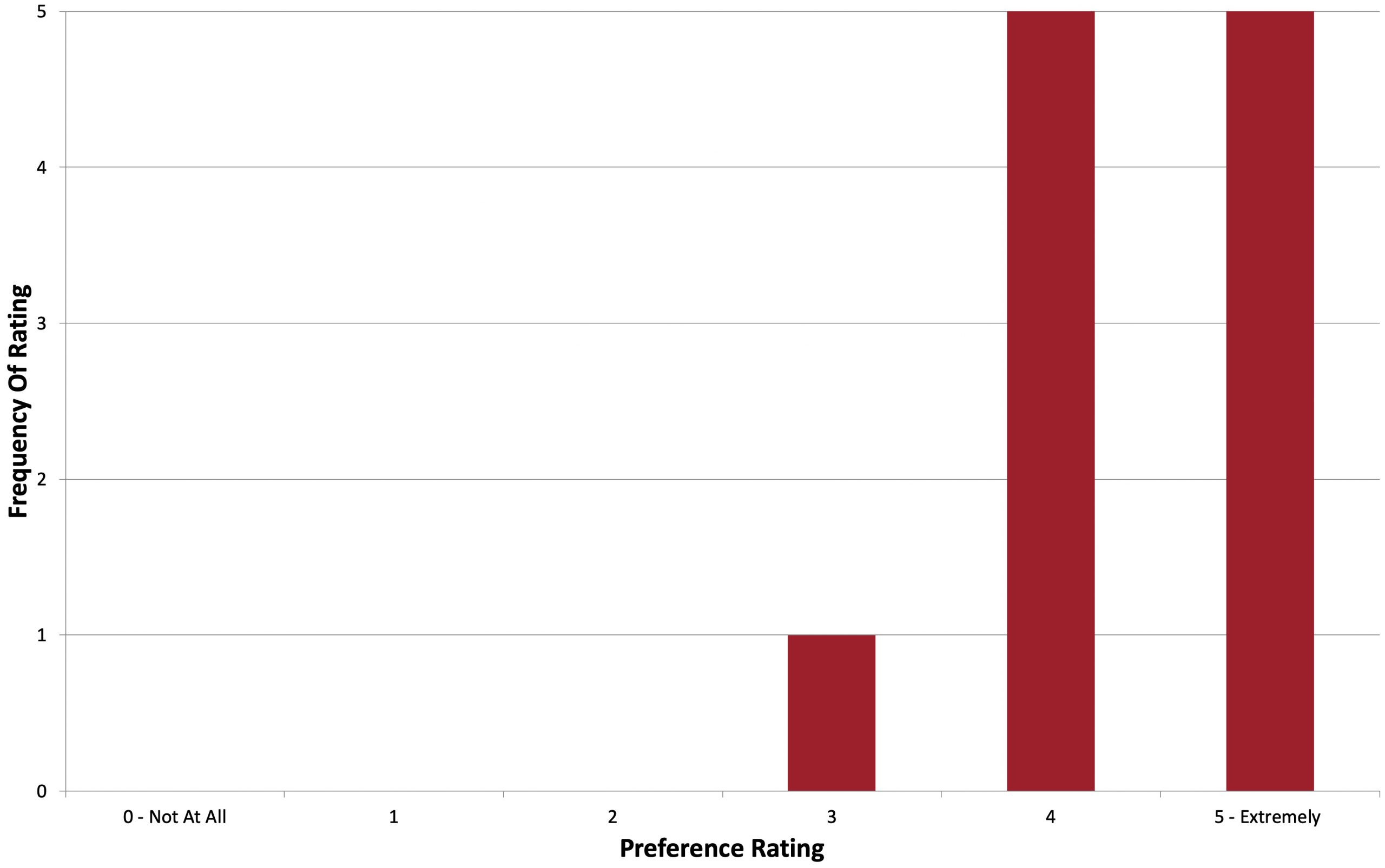











12 thoughts on “Short & Shoddy | Munich Dunkel”
As usual, short and shoddy wins the race
Chamber controlled to 66F or the fermentation vessel? (Where’s the temp probe)
Interesting result!
I secure my probe to the vessel with insulation and tape.
Hey Marshall, In terms of your CO2 capture device I did something similar to purge a pin lock keg in my last brew, but I had the liquid out post of the keg just going into a bucket. I like that you have the star san ending up instead into another keg. What is the device on the CO2 post in the final keg that relieves pressure to allow liquid in and air out?
You have an efficiency of 63% which seems not great. Is that figure low because 13.5 pounds of grain only got to 1.055 OG? If you used a couple pounds less grain but did a full 60 minute mash and 60 minute boil, would you expect to get the same OG? I guess my question is does Short and Shoddy require more grain and expect lower efficiency?
It’s because of the reduced mash length… but I’m certainly no efficiency chaser and tend to think 63% is pretty solid.
Interesting, thanks Marshall.
FWIW I’ve used the same year MT Hood from YVH quite often this year. I always seem to get a lot of herbal character and little to no spice. I’m actually finishing up a keg of a smash beer from Mecca Grade Munich and MT Hood hops. Last weekend I threw some Sterling in the keg I had in the freezer. It’s added a nice spice note to a fairly malty/herbal beer.
Curious as to why you chose Global over Harvest. I’m sure both would do excellent in this style. Maybe I’m over thinking it and it’s probably just what you had on hand at the time.
I actually do have a pouch of Harvest on hand, I just went with Global because I also had a pouch of it on hand. No other reason, really.
Another great S and S report. I’ve learned to relax a lot more on brew days because of Brulosophy. So much of what we were taught turns out, over and over again, not to make a difference. Thanks and keep up the great work!
Good results could also be a result of way better ingredients than years ago- when the brewing practices we learned were established. I agree, I’m really enjoying S&S. It saves so much time that a slight loss of efficiency is a small price to pay.